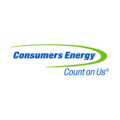
Overview
The utilities industry refers to a sector of the economy that is responsible for the production, distribution, and management of essential services such as electricity, natural gas, water, sewage, and telecommunications. These services are considered fundamental to modern society and are crucial for both residential and commercial purposes.
Depending on specific features and functions, GAO Tek’s carbon dioxide (CO2) are sometimes referred to as Carbonic Acid Gas, Carbon(IV) Oxide, Carbon Oxide, Carbon Gas, Carbonic Anhydride, Dry Ice, R744.
GAO Tek’s carbon dioxide (CO2) have the following applications in utilities industry:
- Water Treatment: GAO Tek’s carbon dioxide (CO2) is used in water treatment processes to control pH levels. It can be injected into water to lower the pH, making it more acidic. This is particularly useful for adjusting the pH of drinking water and wastewater to meet regulatory standards.
- pH Control in Cooling Water: Our carbon dioxide (CO2) can be used to adjust and control the pH levels in cooling water systems, preventing corrosion and scaling in pipes and equipment.
- Water Carbonation: In beverage production, our carbon dioxide is used to carbonate water, producing sparkling water and carbonated beverages like soda.
- Fire Suppression Systems: Some fire suppression systems use GAO’s carbon dioxide (CO2) as a fire-extinguishing agent. It is effective for suppressing fires involving flammable liquids and electrical equipment.
- Cooling and Refrigeration: Our carbon dioxide (CO2) is gaining popularity as a refrigerant in some industrial cooling and refrigeration applications, particularly in transcritical carbon dioxide (CO2) refrigeration systems. It is considered environmentally friendly compared to some traditional refrigerants.
- pH Control in Drinking Water Treatment: Utilities often use our carbon dioxide (CO2) to adjust the pH of drinking water to ensure it meets safety and taste standards before distribution to consumers.
- CO2 Scrubbing: In power plants and industrial facilities, GAO Tek’s carbon dioxide (CO2) scrubbing systems can capture and remove carbon dioxide emissions from flue gases to reduce greenhouse gas emissions and comply with environmental regulations.
- Enhanced Oil Recovery (EOR): In the oil and gas industry, our carbon dioxide (CO2) is sometimes injected into oil reservoirs to enhance oil recovery by reducing the oil’s viscosity and pushing it towards production wells.
- Gas Leak Detection: GAO’s carbon dioxide (CO2) is used in utilities for gas leak detection. Sensors can detect elevated carbon dioxide (CO2) levels, which may indicate the presence of gas leaks in pipelines or distribution systems.
- Hydroponics and Greenhouse Agriculture: In hydroponic systems and greenhouse agriculture, our carbon dioxide (CO2) enrichment can enhance plant growth and productivity by providing additional carbon dioxide for photosynthesis.
- Wastewater Treatment: GAO Tek’s carbon dioxide (CO2) is used in wastewater treatment for pH control and as a carbon source for biological treatment processes.
More information on carbon dioxide (CO2) and their applications in other industries can be found on this page.
Commercial Carbon Dioxide Detectors
This category page lists related products.
Environmental Test Instruments
GAO Tek’s targeted markets are North America, particularly the U.S., Canada, Mexico, and Europe. Hence, in addition to English, this website gaotek.com is offered in other major languages of North America and Europe such as Spanish, French, German, Italian, Polish, Ukrainian, Romanian, Russian, Dutch, Turkish, Greek, Hungarian, Swedish, Czech, Portuguese, Serbian, Bulgarian, Croatian, Danish, Finnish, Norwegian, Slovak, Catalan, Lithuanian, Bosnian, Galician, Slovene, Latvian, Estonian, Welsh, Icelandic, and Irish.
Complying with Utilities Industry Standards
GAO Tek’s carbon dioxide (CO2) comply or help our customers comply with utilities industry standards such as:
- ISO 14001.
- ASHRAE Standard 169.
- NFPA 12.
- ISO 50001.
- ANSI/ASHRAE Standard 15.
- NFPA 55.
- EU Emission Trading System (EU ETS).
- Local and National Regulations.
Complying with Government Regulations
GAO Tek’s carbon dioxide (CO2) comply or help our customers comply with the U.S. government regulations such as:
- Clean Air Act (CAA).
- Carbon Pollution Standards for Existing Power Plants.
- Greenhouse Gas Reporting Program (GHGRP).
- New Source Review (NSR) Program.
- Renewable Portfolio Standards (RPS).
- Fuel Economy Standards.
- State-Level Regulations.
- Federal Energy Regulatory Commission (FERC).
- Department of Energy (DOE).
- Regional Initiatives.
GAO Tek’s carbon dioxide (CO2) comply or help our clients comply with the Canadian regulations such as:
- Greenhouse Gas Pollution Pricing Act (GGPPA).
- Pan-Canadian Framework on Clean Growth and Climate Change.
- Regulations Under the GGPPA.
- Provincial and Territorial Regulations.
- Clean Fuel Standard.
- Federal and Provincial Energy Regulators.
- Canada Energy Regulator (CER).
- Environmental Assessment Processes.
- Renewable Energy Standards.
- Reporting and Monitoring Programs.
GAO Tek’s carbon dioxide (CO2) comply or help our clients comply with the Mexican regulations such as:
- General Law on Climate Change (Ley General de Cambio Climático).
- Energy Transition Law (Ley de Transición Energética).
- National Emissions Inventory (Inventario Nacional de Emisiones).
- Carbon Pricing.
- Environmental Impact Assessment (EIA).
- Clean Energy Certificates (Certificados de Energía Limpia, CELs).
- Regulatory Energy Commission (Comisión Reguladora de Energía, CRE).
- Ministry of Energy (Secretaría de Energía, SENER).
- Federal Electricity Commission (Comisión Federal de Electricidad, CFE).
- National Water Commission (Comisión Nacional del Agua, CONAGUA).
GAO Tek’s carbon dioxide (CO2) comply or help our clients comply with the European regulations such as:
- EU Emissions Trading System (EU ETS).
- Renewable Energy Directive (RED II).
- Energy Efficiency Directive (EED).
- Integrated Pollution Prevention and Control (IPPC) Directive.
- EU Water Framework Directive.
- Energy Performance of Buildings Directive (EPBD).
- EU Electricity Regulation and Directive.
- EU Gas Regulation and Directive.
- European Environment Agency (EEA).
- National Regulatory Authorities (NRAs).
- European Investment Bank (EIB).
- National Agencies and Ministries.
Case Studies of Carbon Dioxide (CO2) in Utilities Industry
Carbon dioxide (CO2) are sometimes called as:
Carbonic Acid Gas, Carbon(IV) Oxide, Carbon Oxide, Carbon Gas, Carbonic Anhydride, Dry Ice, R744.
Here are some practical examples of using carbon dioxide (CO2) in utilities industry:
Investigate power plants in the Northeast that have implemented CO2 capture and storage technologies to reduce emissions. Examine the methods, challenges, and outcomes of these projects.
Analyze the impact of carbon pricing mechanisms, such as the Regional Greenhouse Gas Initiative (RGGI), on utilities in the Northeast. Assess how these programs have influenced emissions reductions and clean energy adoption.
Explore case studies of utilities in the Northeast that have set ambitious carbon-neutral or net-zero emissions goals. Examine their strategies for achieving these targets, including renewable energy integration and energy efficiency measures.
Transition to Natural Gas and Emissions Reduction: Study utilities in the Midwest that have transitioned from coal to natural gas for electricity generation. Analyze the environmental and economic impacts of this transition, including reductions in CO2 emissions.
Biomass Energy and Carbon Neutrality: Investigate utilities in the Midwest that utilize biomass as a renewable energy source. Assess the carbon neutrality claims of biomass energy and the sustainability of biomass feedstock sources.
Renewable Energy Integration in the Midwest Grid: Analyze case studies of utilities and grid operators in the Midwest that have integrated renewable energy sources, such as wind and solar, into the regional grid. Explore the challenges and benefits of renewable energy integration.
Analyze utilities’ efforts to deploy energy storage systems, such as battery storage, for grid resilience and emissions reduction during peak demand periods.
Evaluate energy efficiency programs and initiatives implemented by utilities in the Southern region to reduce energy consumption and CO2 emissions. Examine the impact of these programs on utility operations and customer benefits.
Analyze CCU technologies used in the cement industry in the West to capture CO2 emissions and convert them into valuable products, such as synthetic fuels or building materials.
Study concentrated solar power (CSP) plants in the Western region and their ability to store thermal energy for electricity generation, providing a renewable and low-emission energy source.
Investigate how utilities in the Southern region have responded to carbon pricing mechanisms and state or federal regulations aimed at emissions reduction. Assess their compliance strategies and outcomes.
Investigate large-scale wind farms in the Western U.S. and their contributions to emissions reduction. Assess the technical and regulatory challenges faced by utilities in integrating wind energy into the grid.
Examine the expansion of hydropower capacity in the Western region and its impact on emissions reduction and aquatic ecosystems. Consider case studies of dam removal and fish-friendly hydropower technologies.
Explore case studies of combined heat and power systems that use natural gas for electricity generation and provide useful heat for industrial processes in Ontario, reducing overall emissions.
Study Quebec’s efforts to promote clean energy innovation and the development of advanced technologies for emissions reduction, such as electric vehicle charging infrastructure.
Investigate data centers in Nova Scotia that have implemented carbon-neutral strategies, including renewable energy sourcing and energy-efficient technologies, to reduce their carbon footprint.
Analyze Saskatchewan’s transition to renewable energy sources and its efforts to reduce CO2 emissions from coal-fired power generation.
Explore community-led energy initiatives in Mexico, such as community-owned renewable energy projects and partnerships between utilities and local communities to promote sustainable energy practices.
Investigate the development and operation of offshore wind farms in the UK, such as the London Array and Hornsea projects, and their contributions to emissions reduction and clean energy generation.
Analyze the European Union Emissions Trading System (EU ETS) and its impact on utilities’ emissions reduction efforts and compliance strategies in various EU member states.
GAO RFID Inc. RFID Hardware a sister company of GAO Tek Inc., is ranked as a top 10 RFID supplier in the world. Its RFID, BLE, and IoT products have also been widely used in utilities industry.
Use of Carbon Dioxide (CO2) with Leading Software and Cloud Services in Utilities Industry
GAO Tek has used or has facilitated its customers to use GAO’s carbon dioxide (CO2) with some of the leading software and cloud services in their applications. Examples of such leading software and cloud services include
- Greenhouse Gas Management Institute’s GHG Accounting Software.
- Ecometrica Emissions Data Management Platform.
- Schneider Electric’s EcoStruxure.
- BuildingIQ.
- GE’s Grid Solutions Software.
- EnerNOC’s DemandSMART.
- Maximo for Utilities.
- Native Energy’s Carbon Offset Software.
- Carbon Clear’s Carbon Reduction Planning Tool.
- Sphera’s EHS Software.
- CarbonScope by the World Resources Institute.
- EnergyCAP.
- Enviance.
- Carbon Disclosure Project (CDP).
- GHG IQ.
- Schneider Electric EcoStruxure.
- Siemens Navigator.
- Microsoft Azure Energy Analysis.
- Google Cloud Energy Platform.
- Amazon Web Services (AWS) Environmental Data Lake.
- IBM Environmental Intelligence Suite.
- Energy Exemplar’s PLEXOS.
GAO Tek’s carbon dioxide (CO2) and their applications in other industries are listed on this page.
Commercial Carbon Dioxide Detectors
Other related products can be found at this category page.
Meeting Customers’ Demands
Large Choice of Products
In order to satisfy the diversified needs of their corporate customers, GAO Tek Inc. and its sister company GAO RFID Inc. together offer a wide choice of testing and measurement devices, network products, RFID, BLE, IoT, and drones.
Fast Delivery
To shorten the delivery to our customers, GAO has maintained a large stock of its products and is able to ship overnight within continental U.S. and Canada, and fast delivery to Mexico and Europe from the nearest warehouse.
Local to Our Customers
We are located in both the U.S. and Canada. We travel to customers’ premises if necessary. Hence, we provide a very strong local support to our customers in North America, particularly the U.S., Canada and Mexico and Europe. Furthermore, we have built partnerships with some integrators, consulting firms and other service providers in different cities to further strengthen our services. Here are some of the service providers in utilities industry we have worked with to serve our joint customers:
- Capgemini.
- Cognizant.
- Infosys.
- KPMG.
- Wipro.
- Accenture.
- Deloitte.
- Sierra Systems.
- Softchoice.
- Compugen.
- Everis Mexico.
- Atos Mexico.
- Softtek.
- HCL Technologies.
- Atea.
- Tech Mahindra.
- Soprano Consulting.
GAO Has Many Customers in Utilities Industry
The products from both GAO Tek Inc. and GAO RFID Inc. have been widely used in utilities industry by many customers, including some leading companies. Here is more information on applications of GAO RFID Inc.’s carbon dioxide (CO2) in utilities industry.
Here are some of GAO’s customers in utilities industry:
- Exelon Corporation
- National Grid.
- Eversource Energy.
- NV Energy.
- Avista Corporation.
- Ameren Corporation.
- DTE Energy.
- Consumers Energy.
- Xcel Energy.
- Duke Energy.
- Southern Company.
- NextEra Energy.
- Entergy Corporation.
- Dominion Energy.
- Fortis Inc.
- Ontario Power Generation (OPG).
- BC Hydro.
- TransAlta Corporation.
- Enbridge Inc.


















Contact Us
If you interested in our products, services or partnering with us, please feel free to contact us by filling out this form:
or email us at sales@gaotek.com
